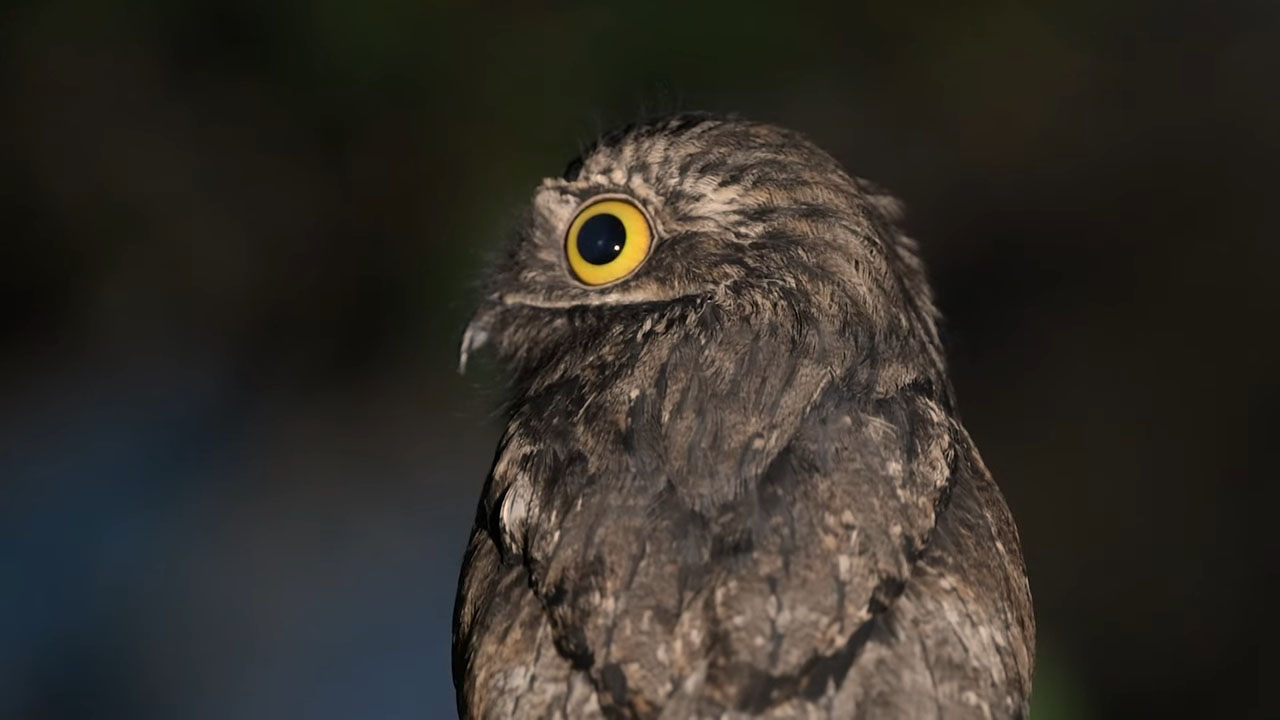
Share Post:
The “Ghost Bird” is a nickname given to a nocturnal creature with an eerie and mysterious presence: the Great Potoo.
Known for its haunting call and large, expressive eyes, this bird has captivated both scientists and nature enthusiasts alike. Its almost spectral behavior, combined with its exceptional camouflage and vocalizations, has led to its ghostly reputation.
The Great Potoo’s characteristics make it seem otherworldly, adding to its allure as a rare, nearly invisible bird hidden within the dense forests of Central and South America.
What Is the Ghost Bird (Great Potoo)?
The Great Potoo, scientifically known as Nyctibius grandis, belongs to the family Nyctibiidae.
Despite its nocturnal habits and an

appearance reminiscent of owls, it is not related to owls. Instead, it is more closely related to nightjars, another group of nocturnal birds.
- Large, round eyes and a broad mouth, help it catch prey in low-light conditions.
- Gray-brown camouflaged feathers blend perfectly with the bark of trees, allowing it to avoid predators during the day.
Notably, the Great Potoo is the largest member of the potoo family, growing up to 2 feet in length. Its size and appearance make it stand out among other nocturnal birds.
- Cryptic posture: During daylight hours, the Great Potoo adopts a motionless, upright stance, blending so well with its surroundings that it looks like a broken tree branch.
- Impressive camouflage: When perched on tree trunks or branches, its appearance is so convincing that even seasoned birdwatchers often fail to spot it.
Despite its large size and its eerie reputation, the Great Potoo remains a rare sight in the wild. This elusiveness contributes to the ongoing mystery and fascination surrounding this “ghostly” bird.
Why Is It So Rarely Seen?
The rarity of Great Potoo sightings can be attributed to several factors, mainly its nocturnal habits and exceptional camouflage abilities. Here are some key reasons why this elusive bird is so difficult to spot:
| Reason | Description |
|---|---|
| Nocturnal Nature | Active only at night, making daytime sightings rare. |
| Daytime Camouflage | Blends with tree bark by staying motionless. |
| Cryptic Posture | Mimics broken branches remain alert while appearing asleep. |
| Limited Geographical Range | Lives in limited tropical areas of South and Central America. |
| Declining Population | Population declines due to habitat loss. |
The combination of these factors makes the Great Potoo a rare and elusive sight in the wild.
The Great Potoo’s Distinctive Call
The Great Potoo’s distinctive call is one of its most ghostly features, contributing significantly to its reputation as the “Ghost Bird.”
- Eerie, Descending Scream: The Great Potoo’s call is a low, descending scream often described as eerie or unsettling, especially when heard echoing through the night.
- Cementing Its Ghostly Image: The unsettling nature of the call has played a major role in shaping the bird’s ghostly reputation in both scientific and folklore circles.
- Vocalization Differences: Different potoo species produce distinct calls:
- The Great Potoo’s call is roar-like and menacing.
- In contrast, the Common Potoo has a softer, more melodic song. These vocal differences serve practical purposes like communication, especially during mating season and territorial claims.
- Cultural Significance: In South American indigenous cultures, the Great Potoo’s call is often associated with spirits and the supernatural. Some folklore suggests that the bird’s scream acts as a warning or omen, further linking it to the world of ghosts and spirits.
- Enhancing the Bird’s Mystique: These cultural and biological aspects reinforce the bird’s mysterious reputation, merging its eerie call with mythological interpretations and deepening the fascination surrounding the Great Potoo.
Summary
The Great Potoo, or Ghost Bird, remains one of the most elusive and awe-inspiring creatures in the avian world.
Its ability to stay hidden in plain sight through masterful camouflage, combined with its eerie vocalizations, continues to fascinate birdwatchers and researchers alike.
The mystique surrounding the Great Potoo only deepens, making each rare sighting a reminder of nature’s incredible ability to conceal its wonders.











